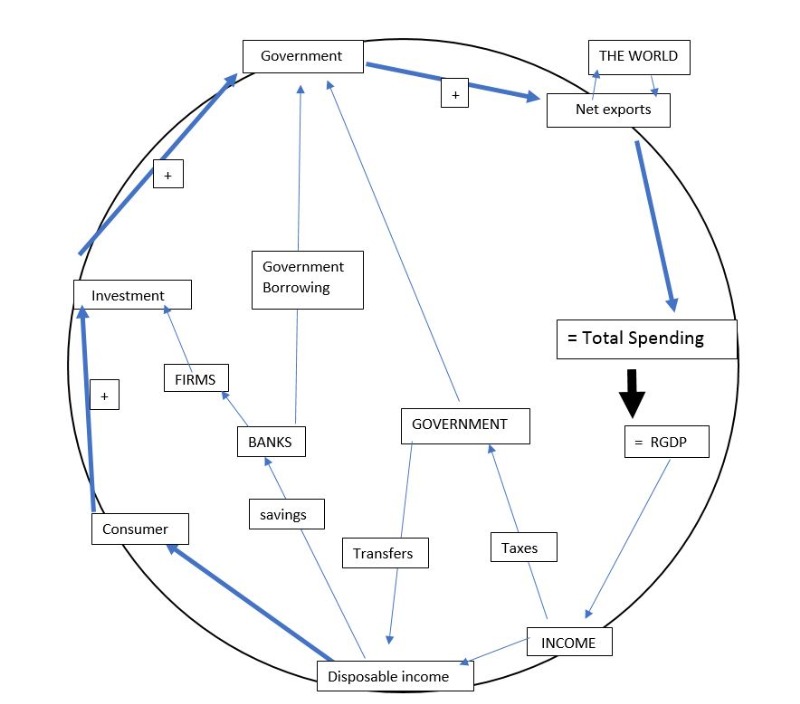Ch. 6 The Circular Flow Diagram and Equilibrium GDP
0.0(0)
0.0(0)
Card Sorting
1/8
Earn XP
Description and Tags
Study Analytics
Name | Mastery | Learn | Test | Matching | Spaced |
|---|
No study sessions yet.
9 Terms
1
New cards
Start with RGDP and go around the circle describing and explaining each type of spending and the leakages and injections until you get back to total spending

2
New cards
List the 4 spending groups and their percentages of GDP
1. consumer - 70%
2. government - 20%
3. investment - 10%
4. net exports - -5%
3
New cards
What is the definition of equilibrium income?
when GDP is equal to aggregate (total) spending - when GDP hits the 45º line
4
New cards
What are the three ways to say that the economy is in equilibrium? Why are each of them equivalent?
1. total spending = GDP
2. leakages = injections
3. changes in inventory = 0
If all the goods produced that year are bought then total spending will equal GDP, inventories will not change, injections will equal leakages
5
New cards
What role do inventories play in the economy? By what other name do we call changes in inventories
Inventories are the first indicator to see changes in autonomous spending, and it is changes in unplanned spending
6
New cards
If total spending is greater than RGDP how does the economy respond and how does it get back to equilibrium?
Because the marginal propensity to consume is less than one, GDP moves faster than total spending and chases it back to equilibrium
7
New cards
If a friend asked you to explain why the US economy goes from recession to inflation over and over, could you explain why in as few words as possible?
Changes in interest rates, employment, supply and demand, etc. all contribute to changes in economy which then feed into public perception of the economy, thus changing investments
8
New cards
Explain the difference and the importance of planned and unplanned investment spending? Is there unplanned spending in any of the other three groups of spending: Government, consumers, net exports?
* planned spending: production sold in same year it was produced
* unplanned spending: additions or subtractions from inventory during that year
* unplanned spending is bad because companies don’t want to have unexpected changes to inventory
* unplanned spending: additions or subtractions from inventory during that year
* unplanned spending is bad because companies don’t want to have unexpected changes to inventory
9
New cards
Explain the concept of the marginal propensity to consume and the role that it plays in bringing the economy back to equilibrium from both an increase and a decrease in total spending
Mpc is the amount of money per dollar that is spend vs. how much is saved; for every dollar saves, 90 cents are spent, and that’s how equilibrium is met, because GDP moves at 100% while total spending moves at 90%